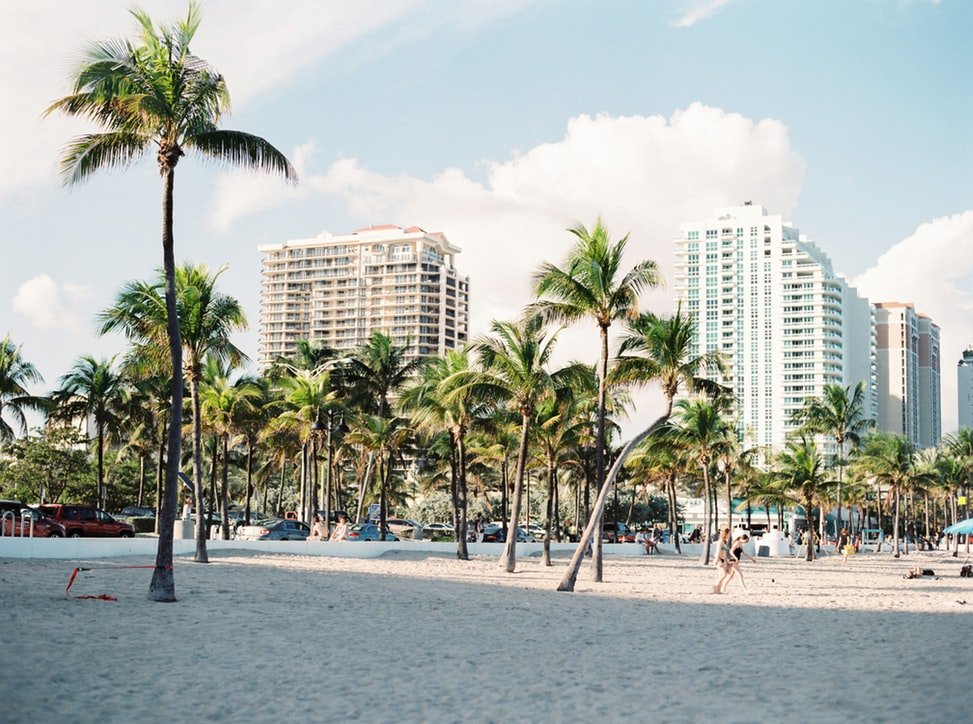Miami Vice is an iconic TV series that completely changed the state of fashion in the 80s. From the pastel-colored shirts and sleek gray or white blazers, people in the United States copied what the main characters of Miami Vice were wearing as it was a general notion back then that their fashion style is classy and badass at the same time.
While a lot of people have watched Miami Vice during its airtime from 1984 to 1990, not many knew about how the TV series was conceptualized into what it was back then. To know more about the ideas and concepts that were put together to create one of the most popular TV series of all time, let us take a look at the fascinating history of Miami Vice.
Bringing the Idea to Life
There have been multiple accounts on how the idea for Miami Vice came to be, but one of the most believable ones is that in the early 1980s, the head of NBC’s Entertainment Division, Brandon Tartikoff, wrote the phrase “MTV cops” in a memo during a brainstorming session. Tartikoff then gave the idea to Anthony Yerkovich, who worked as a producer and writer for another TV series called Hill Street Blues, which was also aired on NBC.
However, Yerkovich told several people that he was the one who got the idea when he read and understood the civil asset forfeiture statutes in the United States. According to the statutes, law enforcement agencies are allowed to confiscate the properties of drug-dealing criminals.
Yerkovich initially planned his concept to turn into a movie that focuses on two cops dealing with vices like drugs and alcohol in Miami. But instead of making a screenplay for a film, Yerkovich wrote a script for a two-hour pilot. A “pilot” is the term used for the first episode of a TV series that the creator will present to network executives, and usually, when that episode received good reviews and ratings, the series will “take-off,” and the producers and directors will receive more funding to continue the show.
The initial tile for Yerkovich’s TV series was Gold Coast, but because of Yerkovich’s fascination with Miami’s beaches and its people’s fashion styles in the 80s, he decided that the show should take place in South Florida, which subsequently prompted him to change the title to Miami Vice.
Casting Crockett and Tubbs
According to sources, big-time actors in the 70s Jeff Bridges and Nick Nolte were two of the chosen to play the role of Sonny Crockett in Miami Vice, but they turned down the offer as TV shows were not considered a high-paying form of entertainment in the 80s.
Larry Wilcox, who starred in another TV crime drama names CHiPs, was also considered to play as Crockett. However, the producers thought that hiring an actor who played as a cop previously would not work well for Miami Vice, as the TV show may be compared by people to CHiPs.
During the process of finding cast members who could play the two protagonists for the show, two pilot shootings were delayed. Finally, for the third pilot shooting, they were able to find actors that have the perfect chemistry to star as the main characters, and these actors are Don Johnson and Philip Michael Thomas.
The Production of Miami Vice
Yerkovich stated clearly to his crew that he wanted the show to be bigger than the others, and as such, most episodes of Miami Vice featured big gun battles that often led to the death of criminals and some police officers. A villain for the series would usually not last long for two to three episodes, which resulted in the show not having a permanent villain. The reason why there have been multiple enemies in the series is that Yerkovich wanted to show the different aspects of the drug trade by incorporating villains that are focused on or tied to each aspect.
Besides making it bigger and bolder, Yerkovich also wanted to incorporate songs that belong to unique music genres in the 1980s. One of these special genres was the New Wave, which was quickly emerging in the 80s thanks to bands like the Buggles and Blondie.
The cinematography of Miami Vice was also influenced by the New Wave culture, as stylists and the members of the art department focused on bringing pastel colors in each and every shot of the series.
To prove the crew’s commitment to the show’s aesthetics, one of the most famous stories that happened behind the scenes was that Bobby Roth, a director for multiple episodes of Miami Vice, found a house where they can shoot interior scenes, but the problem that the art department and Roth had in the house is that it was colored in beige, which did not match the color palette used for Miami Vice. In order to stay true to the overall style of the show, several crew members began painting the walls of the house to gray.
Because New Wave also borrowed from the style of Art Deco architecture, Miami Vice was also credited as a front-runner of the Art Deco revival in the United States from the late 80s to the mid-90s. The revival prompted the government to preserve pieces of Art Deco architecture in the country.
The producers once thought about filming in Los Angeles and make it look like Miami in the shots, but they realized that they should stick to only filming in Miami and other parts of Florida to make the show more authentic.
Miami Vice Fashion
The clothes that were worn by the main characters of Miami Vice are considered classics among those who had watched the show when it first aired on NBC.
The most iconic fashion style that came out of Miami Vice is arguably Crockett’s “t-shirt under jacket” look. During Miami Vice’s peak of popularity, many men started wearing black t-shirts under their white jackets and above their white linen pants. In addition, men also sported Crockett’s unshaven appearance found in most episodes, and they started shaving their beard and mustache into a designer stubble. Along with the black t-shirt and white jacket, Crockett and Tubbs were also seen wearing shirts that are pastel-colored, such as blue, pink, peach, and green. In order for the protagonists to look stylish in every episode, the producers have consulted popular fashion designers like Gianni Versace, Vittorio Ricci, and Hugo Boss in order for the show stylists to fully grasp the 80’s fashion style.
Miami Vice’s Impact on Pop Culture
The Miami Vice fashion became so popular that whenever people think about the 80s, they would often mention the unstructured blazers, the t-shirt under jacket look, the designer stubbles, and the pastel-colored shirts that were popularized by the TV show.
One of the best open-world games of all time, Grand Theft Auto: Vice City, was heavily inspired by the stories and the styles depicted in Miami Vice. Interestingly, Lance Vance, a main character in the game, is voiced by Philip Michael Thomas.
Despite ending in 1990, Miami Vice continued to influence various forms of entertainment. The TV series was able to revolutionize the crime drama genre and helped create other iconic TV shows such as Law & Order and NYPD Blue.

